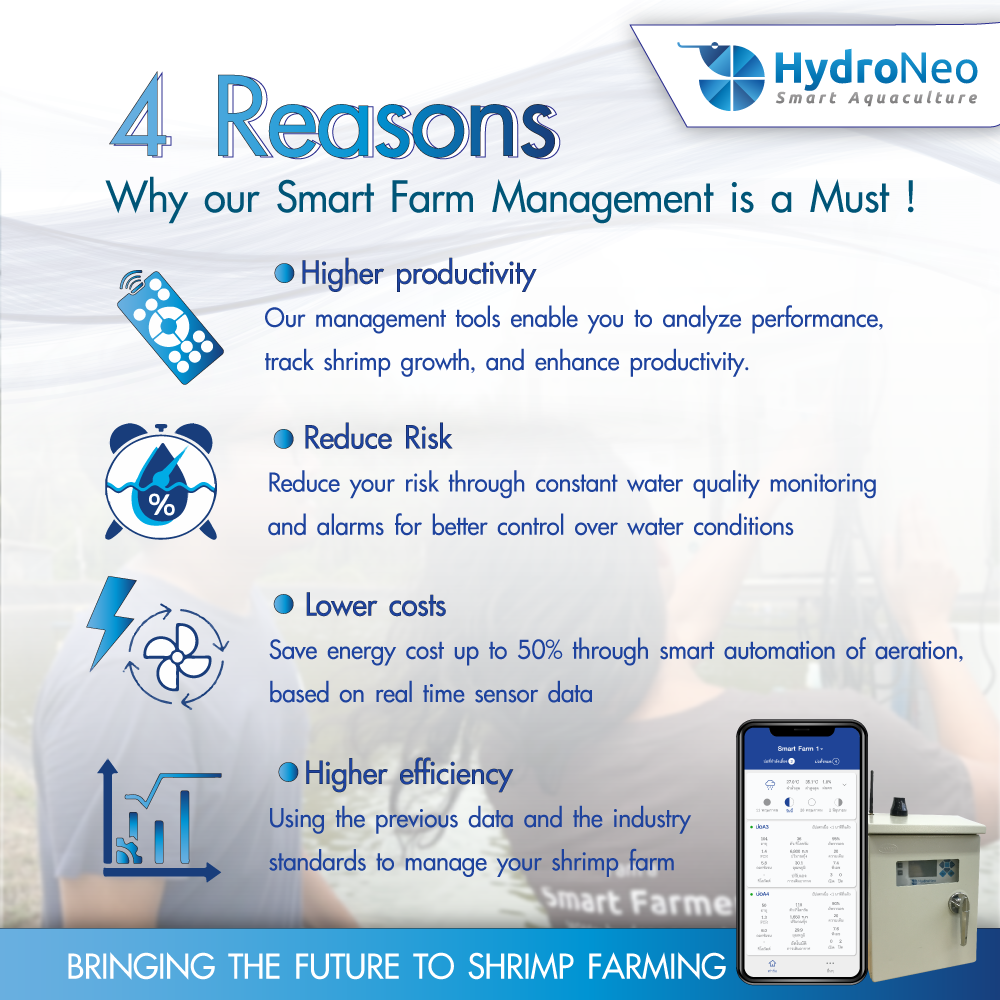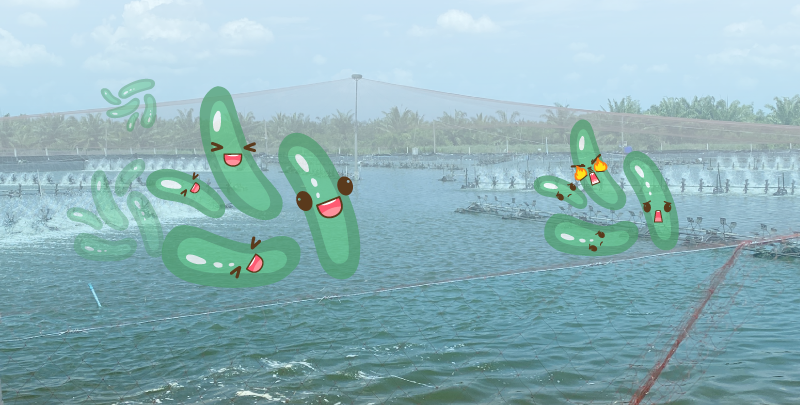The shrimp farming industry faces various challenges, especially in terms of water quality management, waste accumulation, and sustainability in shrimp farming. Photosynthesis from Plankton is one crucial topic that we need to comprehend to improve shrimp farming sustainability.
Plankton in Shrimp Farming
Photosynthesis refers to the process where living organisms, who has chlorophyl, use sunlight to convert carbon dioxide into oxygen and organic compounds, which are found in algae, phytoplankton, and other aquatic plants. Organisms that undergo photosynthesis in water use up dissolved carbon dioxide and release oxygen to the water, which helps balance the underwater ecosystem by increasing the dissolved oxygen (DO) levels. When phytoplankton thrive due to photosynthesis, they contribute to an increase in the plankton population, resulting in darker water.
Benefits of Plankton in Shrimp Farming
1. Water Quality: Photosynthesis by plankton in shrimp farms helps maintain water quality by fixing excess nutrients like nitrogen and phosphorus, which are released as waste by the shrimp. These excess nutrients can lead to eutrophication, the rapid growth of phytoplankton known as “algal blooms,” and a decrease in dissolved oxygen levels, all of which are harmful to shrimp health.
2. Natural Food Source: Many shrimp species consume algae and phytoplankton as part of their diet, especially young shrimp that may not yet efficiently consume pelletized feed. Photosynthesis provides a source of nutrition for shrimp by producing organic matter.
3. Dissolved Oxygen: Photosynthesis plays a role in replenishing dissolved oxygen in water. Shrimp require oxygen for respiration, and an environment with adequate oxygen levels promotes their growth and overall health. Photosynthesis helps reduce the risk of oxygen depletion (oxygen drop) and other negative effects associated with shrimp farming.
Dr. Chalor Limsuwan, a leading expert in aquaculture from Thailand, issued a warning to Thai farmers, stating, “We have grown accustomed to the idea that when the sunlight is strong, the water turns dark in the afternoon. We assume that the dark color indicates abundant plankton, which produces oxygen for us, and we don’t activate the aerators much.”
“However, as it turns out at night, the shrimp come up to the water’s surface because there isn’t enough oxygen, and many ponds face this problem. This issue is not unique to Thailand; many countries are facing it too.”
A 'surviving pond' is one equipped with a smart water monitoring system that warns us when oxygen levels fall below a certain threshold. For example, if we set the oxygen level threshold to below 4 ppm, the water pumps will activate automatically, and we will receive notifications on our mobile devices indicating low oxygen levels. In such cases, we can investigate the situation in the pond.Dr. Chalor Limsuwan


